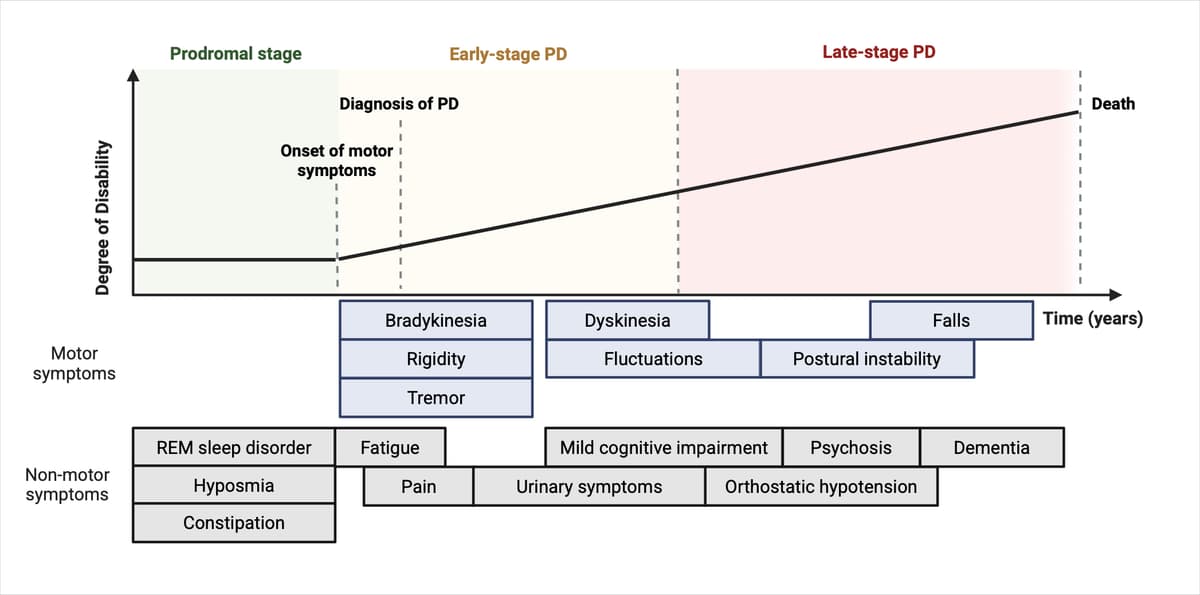What is Parkinson's Disease?
Parkinson's Disease (PD) is the second most common neurodegenerative disease that is clinically diagnosed by the presentation of motor symptoms such as tremor, rigidity and bradykinesia. According to Parkinson's Foundation, over 10 million people worldwide are affected with PD. However, there is no cure for this debilitating neurological disorder, calling an urgent need to search for biomarkers for early detection, as well as therapeutics to slow down or halt disease progression.

Risk Factors
Parkinson's Disease is a complex disease that is largely sporadic, where approximately 90% of the cases do not have a clear genetic cause. Majority of the cases are also late-onset Parkinson's Disease, and age remains the greatest risk factor for Parkinson's Disease. Other risk factors include:
- Age
- Genetic mutations in SNCA, LRRK2, PRKN etc
- Exposure to environmental toxins such as pesticides, heavy metals
Interestingly, several environmental factors such as cigarette smoking and caffeine intake have been shown to reduce the risk of Parkinson's Disease.
Hallmarks of PD
PD involves the neurodegeneration of dopaminergic neurons in the substantia nigra of midbrain, while remaining neurons contain aggregated alpha-synuclein-containing Lewy bodies.
My Research Interests
I have a strong interest in elucidating the molecular mechanisms that drive PD pathogenesis. My research aims to understand how genetic risk factors contribute to disease onset and progression, with a particular focus on synaptic dysfunction and dopaminergic neurodegeneration. During my PhD, I investigated the functional role of a PD-associated risk gene using stem cell-derived dopaminergic neurons and midbrain organoids as in vitro models. By integrating genetic engineering, molecular biology, and transcriptomic approaches, I uncovered novel insights into how this gene influences synaptic vesicle trafficking and dopamine neurotransmission. Through this work, I aim to contribute to the identification of disease-modifying targets and advance our understanding of PD at the cellular and molecular level.
My Research Models
I use human stem cell-derived dopaminergic neurons and midbrain organoids to model Parkinson's Disease. These models allow for high-resolution investigation of synaptic mechanisms, gene expression changes, and cellular phenotypes relevant to neurodegeneration.

Immunostaining of dopaminergic neurons after 40 days of culture.

Immunostaining of midbrain organoid on day 100 of culture.